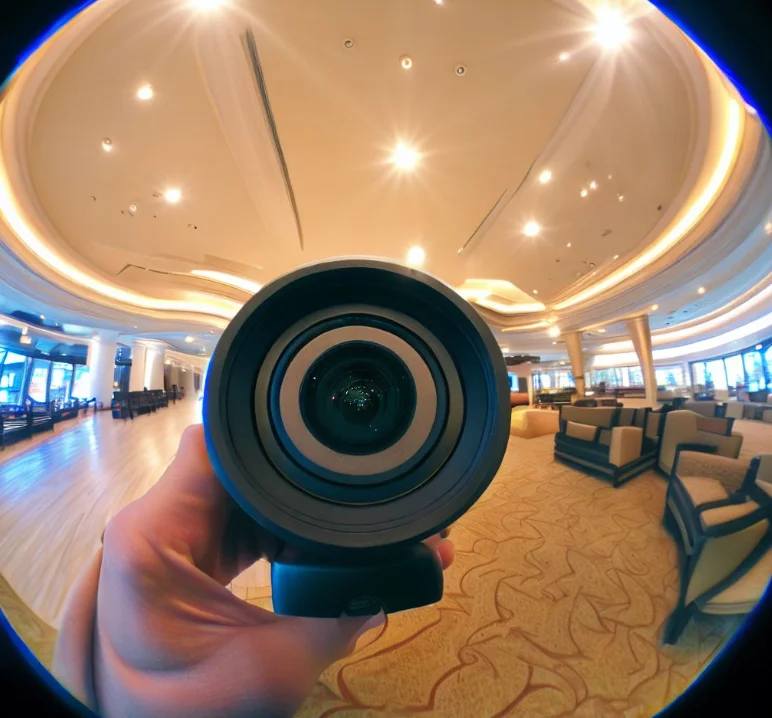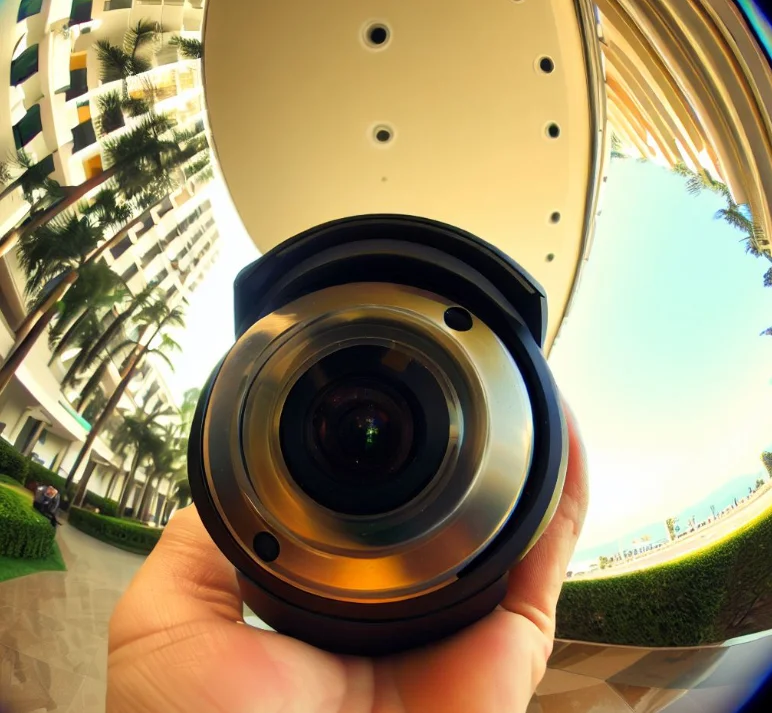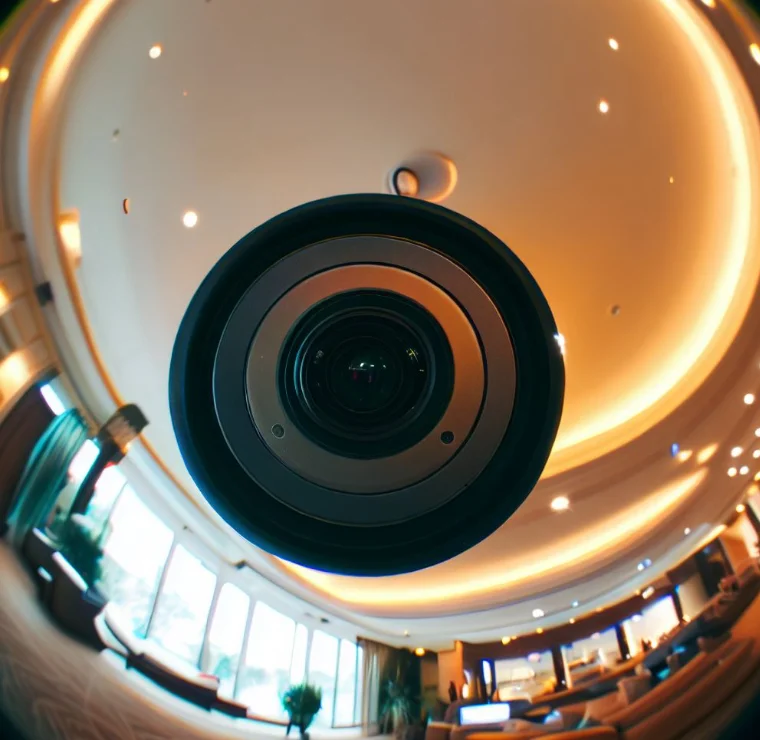Selecting the right security camera system is crucial for hotels looking to protect guests, employees and property. With panoramic cameras becoming more popular, two main options stand out: fisheye and multi-imager cameras. But which technology is better suited for hotel surveillance needs? This guide examines the key differences, pros and cons, and provides recommendations for choosing between fisheye and multi-imager security cameras in hotel settings.
How They Work
Fisheye and multi-imager cameras both provide panoramic views, but use different methods:
- Fisheye: Uses a single ultra wide-angle lens to capture up to a 360 degree view in a single distorted circular image. The video feed can be dewarped through software to flatten the view for normal viewing and camera control/analytics.
- Multi-Imager: Stitches together feeds from multiple normal lenses (up to 8) into one panoramic image, providing an overall 180-360 degree view with no distortion.
Image Quality
A key consideration is image quality and resolution. Multi-imager systems generally provide higher megapixel resolutions by combining multiple camera feeds. This allows greater zooming and more details in imagery. However, the stitching process can create some blind spots or blurring in overlapping seams between lenses.

For hotels, the higher resolution capabilities of multi-imager systems make them better suited for large open spaces like lobbies, reception, restaurants or exteriors where details like faces or license plates may need to be captured. Their slightly higher camera positioning flexibility also aids this.
For smaller interior spaces like hallways, stores or elevators, a dewarped fisheye view may provide sufficient resolution while maximizing coverage. Their lower profiles can also be advantageous in tight spaces.
Installation and Costs
Multi-imager cameras generally have higher hardware costs given their multiple lenses and sensors. Networking and bandwidth requirements are also greater due to the higher megapixel feeds. This makes them more complex and costly to install, especially when adding multiple units to provide full coverage.

For hotels on tight budgets, fisheye systems can meet many surveillance needs at lower total ownership costs. But for those requiring highest quality imagery across many areas, multi-imagers provide advantages that can justify the higher expenses.
Analytics and Controls
Built-in video analytics and remote control capabilities are important factors as well. Multi-imager cameras allow applying analytics like motion sensing, object tracking or AI recognition separately in each lens view. This provides more accuracy than trying to run analytics on stitched or dewarped panoramic footage.
However, fisheye systems continue improving analytic support on dewarped views. Their typically lower resolutions are also sufficient for basic motion detection in many hotel use cases. And dewarped fisheye views enable PTZ-style control digitally through software, vs requiring multiple PTZ cameras.

Coverage Angles
Hotels require wide viewing angles to cover large common areas, while minimizing blind spots. 180 degree views are typical, but 360 degree cameras provide maximum coverage.
Multi-imager systems are available in 180, 270 or 360 versions by adding more lenses. But they have some inherent blind spots in stitching seams between lenses.
Fisheye cameras also come in 180, 360 and beyond models. Their single seamless lens avoids blind spots, but dewarping stretches imagery at steep viewing angles which can impact image quality.
For simpler square/rectangular spaces, 180 degree views from either camera work well. But for covering challenging areas like corners or ceilings, 360 fisheyes provide unobstructed views that maximize security.
Recommendations for Hotel Use
- Lobby/Reception – Multi-imager for higher resolution details across open Grand Lincoln spaces
- Hallways – 180/360 degree fisheyes covering full corridors and entries efficiently
- Elevators – Fisheyes for compact discrete coverage
- Restaurants – Multi-imagers to capture faces and activity clearly from all angles
- Loading Docks – Multi-imager to identify vehicles/license plates entering facility
- Perimeter – Mix of 180/360 fisheyes and multi-imagers for complete exterior security
- Retail Stores – 180 degree multi-imagers to watch merchandise, counter and entries
- Meeting Rooms – 180/360 fisheyes for simple complete coverage
- Larger Banquet Spaces – Multi-imagers to monitor events and capture finer details
- Pool Area – 360 fisheyes to eliminate blind spots in busy open aquatic spaces
Conclusion
Choosing between fisheye and multi-imager security cameras for hotels depends on factors like budget, resolution needs, physical spaces, analytics requirements and desired coverage angles. Multi-imager systems excel at providing high detail imagery across large open areas, but come at higher costs. For many interior hotel security needs, lower resolution 180/360 degree fisheye cameras offer reliable coverage at lower total ownership while still supporting essential features like remote viewing, recording and motion alert capabilities. But larger hotels may benefit from deploying the two technologies strategically based on use case recommendations. Carefully evaluating their pros, cons and tradeoffs allows selecting the right mix of panoramic security cameras for hotel needs and budget.
